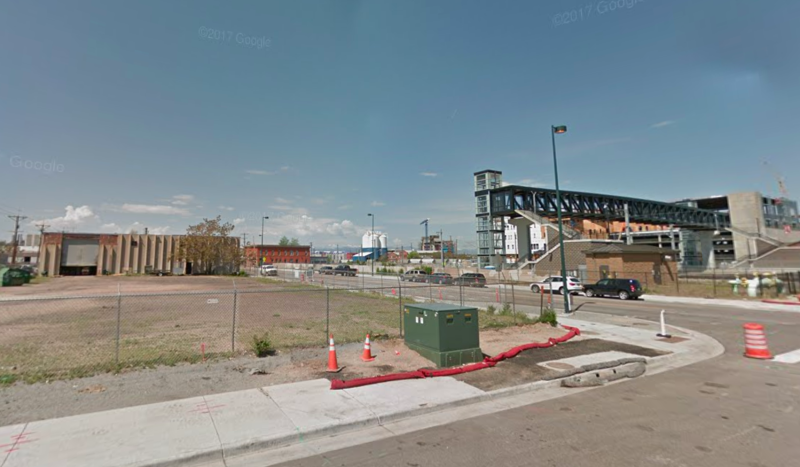More Room to House People, Not Cars, Around 38th and Blake RTD Station

For decades, Denver development policy has skewed growth in the city toward expensive, exclusive housing, all while encouraging more driving and traffic. A vote in the City Council last night is a welcome signal that Denver is ready to do things differently.
In Denver’s default development paradigm, homeowners block the construction of compact, walkable apartment buildings near transit, while the city’s zoning code mandates the construction of car storage in new buildings. It’s exactly the opposite of what cities should be doing to make neighborhoods affordable and prevent growth from suffocating the city with traffic.
Yesterday, the City Council endorsed a better type of development at the 38th and Blake RTD station in the River North section of Five Points. In an 11 to 1 vote, the council allowed for walkable housing development mixed with offices and retail, all while scrapping parking requirements within a half-mile of the train stop.
The new development rules will enable buildings as tall as 16 stories, coupled with incentives for developers to build below-market-rate apartments and condos in exchange for taller building heights.
Residential neighborhoods, commercial strips on Larimer Street and Brighton Boulevard, the Platte River Trail, and rec and health centers sit a stone’s throw from 38th and Blake. Yet the area around the station has been zoned for industrial use and is currently surrounded by vacant dirt parcels, warehouses, and parking lots that limit the A Line’s usefulness.
“My son actually said this: ‘Dad, it’s like someone needs to come with Legos and finish all of these plots of land,'” said Council President Albus Brooks, who sponsored the bill. “It’s just a ton of missing pieces. It’s broken networks. Nothing is connected.”
Within a few years, the zoning overhaul should produce more housing and jobs around the transit station, as well as a more human-scaled environment with ground-floor retail, Brooks said.
Brooks referred to two projects in the pipeline that can now get built thanks to the zoning change: A 16-story building with 30 units reserved for households of four making about $67,000 or less, and a five-story project where all the apartments are set aside for households making between 30 and 60 percent of the area median income, or between about $25,000 and $50,000 a year for a family of four.
Residents who supported the policies noted the importance of anchoring growth near good transit.
“Changing city policy to allow people, services, and work places to intensely concentrate around transit stations is essential if you want to achieve this goal,” said Ryan Keeney, a University Park resident who spoke at Monday’s public hearing. He said the change facilitates more walking, biking, and transit use, which is “good for our health and essential in fighting climate change.”
Opponents of the measures cited displacement from increasing rents occurring in pockets all over the Denver region where local governments didn’t plan ahead for rising property values near rail stations.
If Denver doesn’t allow more housing near transit stations, however, the displacement around areas with good transit access will only accelerate.
The zoning changes that passed yesterday won’t solve the whole housing crisis, but they are meant to be a tool to mitigate displacement, said Brad Buchanan, executive director of the Denver Department of Community Planning.
“This is another arrow in the quiver and we need 900 of them,” he said.
The incentive bill is “the most significant thing” that happened Monday, said Buchanan, because it gives Denver the ability to create more walkable places around other transit stations in the city that are currently engulfed in sprawl.


